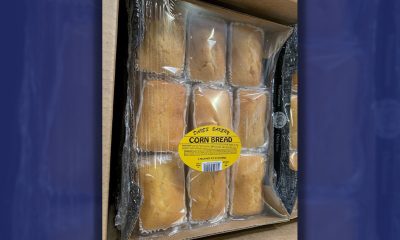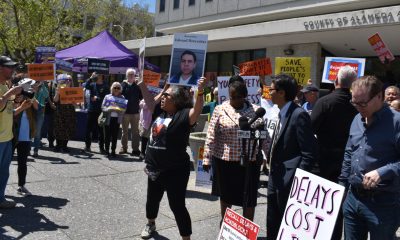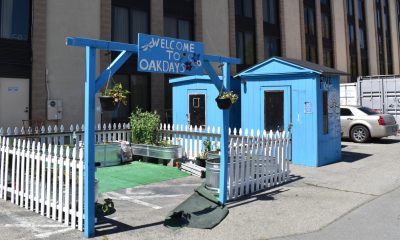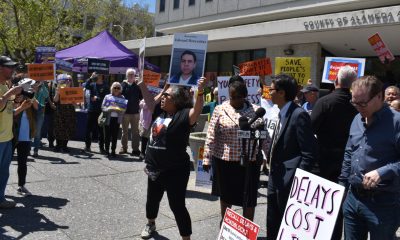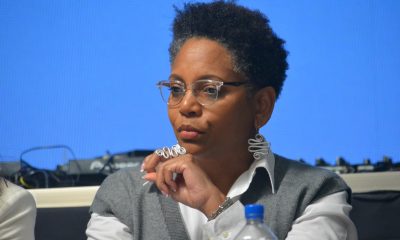Business
Study Finds: Attacks on Public Sector Unions Put Black Community at Risk
LOS ANGELES SENTINEL — A recent study indicates that Black workers stand to lose critical unionized public sector jobs from threats to unions in L.A. County.
By Charlene Muhammad
A recent study indicates that Black workers stand to lose critical unionized public sector jobs from threats to unions in L.A. County.
According to the report, “An Ongoing Demand for Los Angeles: A Bright Future Requires Organizing More Black Public Sector Union Workers,” public sector jobs and unions that represent such employees contribute to the economic and social stability of the Black middle class in Los Angeles.
The 730 Black workers surveyed by the Los Angeles Black Worker Center found that L.A. County Black public sector union workers earn more than their non-union counterparts, and report more stable communities and longer careers. In addition, higher wagers and better benefits allow them to care for their families, the workers reported.
The document was produced as collaborative of the Los Angeles Black Worker Center, the Advancement Project, the Los Angeles County Federation of Labor, and six members of the LA Fed whose members agreed to be surveyed (AFSCME 741, AFSCME 2325, AFSCME 3090, AFSCME 3947, SEIU 721, and SEIU 1000).
The unions presented the report to elected officials of the City of Los Angeles and the county via an open letter in the spirit of partnership. Their aim is to find public policy avenues to expand pathways for Black workers to good public sector jobs, jobs they hail as pillar of Black community health.
The feedback has all been positive, according to Michael Green, regional director for Service Employees International Union Local 721.
“I know right now that a pipeline to create more access for our Black community to gain employment in the public sector has not been as fruitful as it should be … One of the things that we wanted to talk about was to create more access to the pipeline and also the attacks on unions,” Green told the Sentinel.
Nationally, according to the open letter, the U.S. Supreme Court’s decision in Janus v. AFSCME declared open season on public sector unions.
The case involves Mark Janus, who was the plaintiff and a a former child support specialist for state government in Illinois. The Supreme Court ruled June 27, 2018 that government employees like him could not be forced to pay a government union as a condition of working in public service. He stated in an online post that he briefly public sector work, and when he returned, even though he didn’t belong to the union for his field, it had power to exclusively represent over 90 percent of state workers in Illinois, and automatically deducted money from his paycheck, whether he supported the union’s politics and policies or not.
Janus called the ruling a tremendous victory for workers’ rights. Union representatives called it a decision that ended fair-share representation in government unions which pose an existential threat.
“Many understood it as part of a decades-long campaign against the public sector overall. It should also be understood as an attack on Black life,” the letter continued.
“That should be shocking, because most of the time 20 percent of Black working adults serving the public sector are working for state and federal or local government and historically, the public sector jobs have been critical in the formation of the Black middle class in America,” said Green.
In honor of slain civil rights leader Dr. Martin, who’s birthday was commemorated worldwide on January 21, union representatives wanted to bring the issue to the forefront and rekindle the pipeline to get more community, local and state governments, and elected officials to work with them to create more opportunities for Black employment in the public sector, Green stated.
The workers surveyed further found the L.A. County Black public sector union workers have held their jobs much longer than Black private sector workers. For instance, 44 percent of Black public sector union workers had been in their jobs for more than 15 years, according to the report.
“Our communities aren’t very segregated by income, and when you hurt our middle-class, you hurt all of us,” said Lola Smallwood-Cuevas, founder of the Los Angeles Black Worker Center. “Generations of public service through unionized jobs have allowed families to buy homes and have kept communities together through hard times. By attacking that source of community stability, Janus was a straightforward attack on black life,” she added.
Other findings showed how vital unionized public sector jobs are to Black communities facing disproportionately high unemployment, underemployment and poverty rates. Numerous Black workers told surveyors that union employment helped them purchase or stay in their home and significantly more public sector union workers than non-public sector workers receive health, vision, dental and retirement benefits, according to a release issued by the union collaborative and its partners on January 11.
As well, unionized public sector benefits include education, paid family leave, licensing assistance and paid sick days, which are virtually non-existent among non-public sector workers, the report went on.
“I’ve been active in my union for 15 years,” says Collee Fields, raining and Services Coordinator for the City of Compton and the President of the American Federation of State, County and Municipal Employees (AFSCME) Local 3947.
“My mom was a steward, and my grandfather was in his union when he worked at the MTA. I grew up with the union. It’s been a blessing to have this job. It’s important for the Black community to have greater access to a public sector job like mine,” stated Fields, who credits her job’s benefits with allowing her to care for her daughter and grandson throughout her daughter’s kidney transplant.
This article originally appeared in the Los Angeles Sentinel.
Bay Area
Mayor Breed Proposes Waiving City Fees for Night Markets, Block Parties, Farmers’ Markets, Other Outdoor Community Events
Mayor London N. Breed introduced legislation on April 26 to encourage and expand outdoor community events. The first will waive City fees for certain events, making them less costly to produce. The second will simplify the health permitting for special event food vendors through the creation of an annual permit. Both pieces of legislation are part of the Mayor’s broader initiative to bring vibrancy and entertainment to San Francisco’s public right of ways and spaces.

Mayor’s Press Office
Mayor London N. Breed introduced legislation on April 26 to encourage and expand outdoor community events.
The first will waive City fees for certain events, making them less costly to produce. The second will simplify the health permitting for special event food vendors through the creation of an annual permit. Both pieces of legislation are part of the Mayor’s broader initiative to bring vibrancy and entertainment to San Francisco’s public right of ways and spaces.
Outdoor community events are integral to San Francisco’s vibrant culture and sense of community. These events include night markets, neighborhood block parties and farmers markets, and bolster the City’s economy by supporting local businesses and attracting tourists eager to experience San Francisco’s unique charm and food scene.
They offer residents, workers and visitors, opportunities to engage with local artists, musicians, and food vendors while enjoying the San Francisco’s stunning outdoor spaces and commercial corridors.
The legislation will allow for more and new community gatherings and for local food vendors to benefit from the City’s revitalization.
“San Francisco is alive when our streets are filled with festivals, markets, and community events,” said Breed. “As a city we can cut fees and streamline rules so our communities can bring joy and excitement into our streets and help revitalize San Francisco.”
Fee Waiver Legislation
The events that can take advantage of the new fee waivers are those that are free and open to the public, occupy three or fewer city blocks, take place between 8 a.m. and 10 p.m., and have the appropriate permitting from the ISCOTT and the Entertainment Commission.
The applicant must be a San Francisco based non-profit, small business, Community Benefit District, Business Improvement District, or a neighborhood or merchant association. Fees eligible for waiver include any application, permit, and inspection/staffing fees from San Francisco Municipal Transportation Agency, Department of Public Health, Fire Department, Entertainment Commission, and Police Department.
Currently, it can cost roughly anywhere between $500-$10,000 to obtain permits for organized events or fairs, depending on its size and scope. Organizations and businesses are limited to a maximum of 12 events in one calendar year for which they can receive these fee waivers.
Food Vendor Streamlining Legislation
The second piece of legislation introduced will help special event food vendors easily participate in multiple events throughout the year with a new, cost-effective annual food permit. Food vendors who participate in multiple events at multiple locations throughout the year will no longer need to obtain a separate permit for each event. Instead, special event food vendors will be able to apply and pay for a single annual permit all at once.
“Many successful food businesses either begin as pop-up vendors or participate in special events to grow their business,” says Katy Tang, Director of the Office of Small Business. “Giving them the option for an annual special event food permit saves them time and money.”
Currently, food vendors are required to get a Temporary Food Facility (TFF) permit from the Department of Public Health (DPH) in order to participate in a special event, among permits from other departments.
Currently, each special event requires a new permit from DPH ranging from $124-$244, depending on the type of food being prepared and sold. Last year, DPH issued over 1,500 individual TFF permits. With the new annual permit, food vendors selling at more than four to six events each year will benefit from hundreds of dollars in savings and time saved from fewer bureaucratic processes.
“This legislation is a step in the right direction to make it easier for food vendors like me to participate in citywide events,” said Dontaye Ball, owner of Gumbo Social. “It saves on time, money and makes it more effective. It also creates a level of equity.”
Bay Area
Faces Around the Bay: Sidney Carey
Sidney Carey was born in Dallas, Texas. He moved with his family to West Oakland as a baby. His sister is deceased; one brother lives in Oakland. Carey was the Choir Director at Trinity Missionary Baptist Church for 18 years.
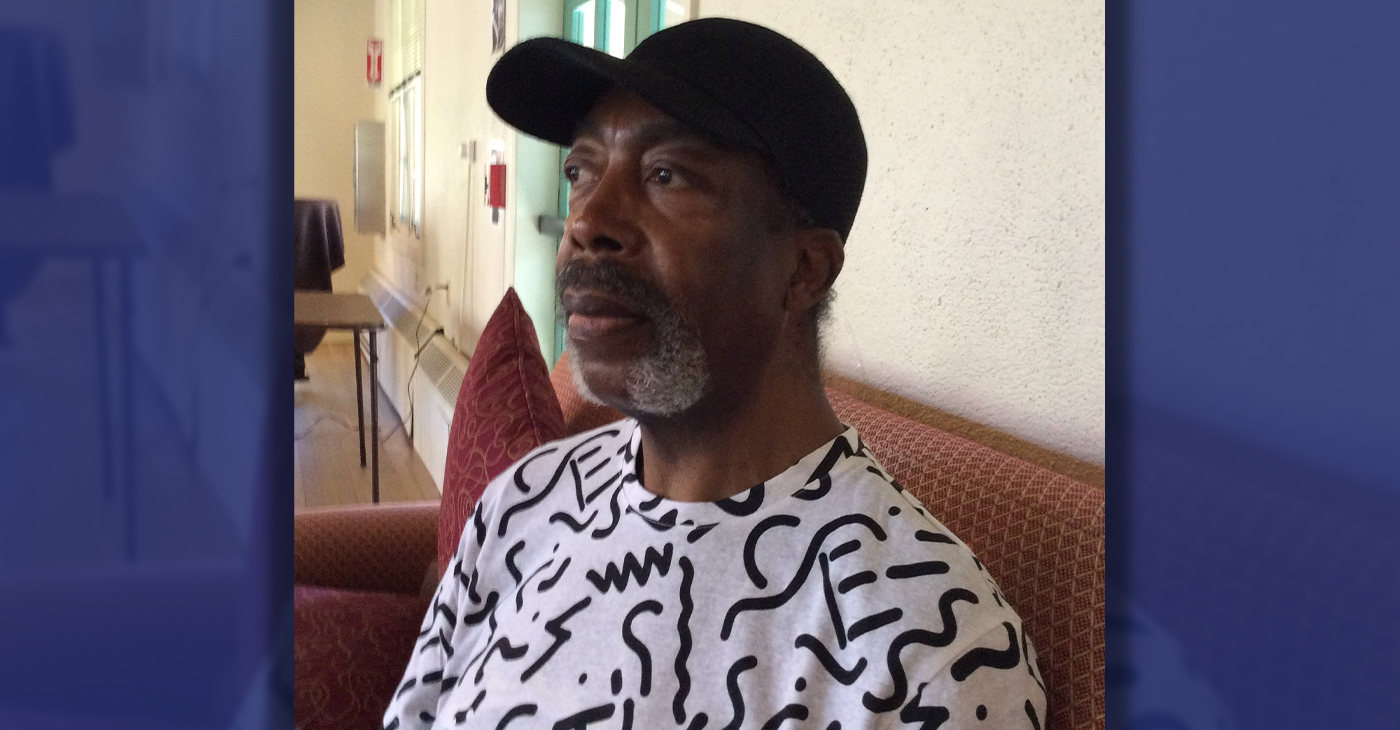
By Barbara Fluhrer
Sidney Carey was born in Dallas, Texas. He moved with his family to West Oakland as a baby. His sister is deceased; one brother lives in Oakland.
Carey was the Choir Director at Trinity Missionary Baptist Church for 18 years.
He graduated from McClymonds High with a scholarship in cosmetology and was the first African American to complete a nine-month course at the first Black Beauty School in Oakland: Charm Beauty College.
He earned his License, and then attended U.C., earning a secondary teaching credential. With his Instructors License, he went on to teach at Laney College, San Mateo College, Skyline and Universal Beauty College in Pinole, among others.
Carey was the first African American hair stylist at Joseph and I. Magnin department store in Oakland and in San Francisco, where he managed the hair stylist department, Shear Heaven.
In 2009, he quit teaching and was diagnosed with Congestive Heart Failure. He was 60 and “too old for a heart transplant”. His doctors at California Pacific Medical Center (CPMC) went to court and fought successfully for his right to receive a transplant. One day, he received a call from CPMC, “Be here in one hour.” He underwent a transplant with a heart from a 25-year- old man in Vienna, Austria
Two years later, Carey resumed teaching at Laney College, finally retiring in 2012.
Now, he’s slowed down and comfortable in a Senior Residence in Berkeley, but still manages to fit his 6/4” frame in his 2002 Toyota and drive to family gatherings in Oakland and San Leandro and an occasional Four Seasons Arts concert.
He does his own shopping and cooking and uses Para Transit to keep constant doctor appointments while keeping up with anti-rejection meds. He often travels with doctors as a model of a successful heart-transplant plant recipient: 14 years.
Carey says, “I’m blessed” and, to the youth, “Don’t give up on your dreams!”
Business
Maximizing Your Bank Branch Experience
In a world of online tools that let you make banking transactions with the touch of a button, the idea of visiting a branch might seem unnecessary. However, if you haven’t visited your local branch recently, you might be surprised by what it has to offer. Your branch is much more than a place to deposit and withdraw money – it can offer the opportunity to build valuable relationships with people who can help you achieve financial independence.

Sponsored by JPMorgan Chase & Co.
In a world of online tools that let you make banking transactions with the touch of a button, the idea of visiting a branch might seem unnecessary.
However, if you haven’t visited your local branch recently, you might be surprised by what it has to offer. Your branch is much more than a place to deposit and withdraw money – it can offer the opportunity to build valuable relationships with people who can help you achieve financial independence.
Diedra Porché, Head of Community and Business Development at Chase, talks about how the bank model has evolved to maximize the branch experience for customers; how connecting with your local branch team can help you think differently about money and investing for your future.
How can a customer feel connected to a bank branch?
I love that question because we ask ourselves the same thing every day. Being part of the community means meeting with local leaders to find out what they need from us and then designing our branches around that. For example, at some of our community branches we have what we call a living room where we can host financial workshops, small business pop-up shops or nonprofit organization meetings. We also hire locally. You feel much more connected talking about financial aspirations with people from your community who went to the same high school, place of worship or maybe frequented the same recreation center down the street when they grew up.
How can I build a relationship with my bank?
Customers should feel comfortable sharing their goals, needs and wants with their banker. Also, it helps to remember the Community Manager is there to help solve your finance challenges and build a roadmap for success. You might have a short-term or long-term goal to open a business, build your credit, become debt-free, buy a home, or save for retirement, and our community team can help. At Chase, we strive to make dreams possible for everyone, everywhere, every day. Your financial future starts with building those relationships.
How can customers change negative perceptions they have about managing their money?
Far too often, customers are intimidated when they visit a bank. Our goal is to demystify banking and money myths empowering people to make the right decisions. For example, a big myth is assuming you need a lot of money to have a bank account. You don’t! Another myth is you need to carry a balance on your credit card to build credit — actively using your credit card can demonstrate that you can use credit responsibly but carrying a balance won’t necessarily improve your credit score. Finally, understanding mobile and online banking safety is key. There are so many safeguards and protections in place to guard your personal information and funds.
What’s an easy step one can take to shift their financial behavior right now?
Cultivating self-awareness is a good first step. Start by taking inventory of your spending. Be honest with yourself about what you need and what you want. Too often, people confuse the two, which leads to bad decisions. Rent is something you need to pay. An extra pair of shoes is something you may want but before you buy them ask yourself if that’s the best use of your hard-earned money. Too often, our beliefs and our fears shape our financial realities. If any of those beliefs are limiting your financial behavior, it’s important to question and examine them, and then decide you’re open to learning something different.
What’s one perception about banking that you’d like to change?
I think folks are surprised there are so many resources available and accessible both at our branches and online, it’s always a good idea to visit a nearby branch and speak to a Community Manager or banker. Outside of what we offer in-branch, our teams also work with local neighborhood partners who provide a variety of services to support the community, businesses and residents. I received a unique piece of feedback from an employee who started with the bank and had lived in the same community his whole life. When he visited his local community branch, he said, “Diedra, when I walked in, I felt dignified.” Every time I recount that story, it warms my heart because that’s what we want — we want our centers to belong to the community.
-

 Community3 weeks ago
Community3 weeks agoFinancial Assistance Bill for Descendants of Enslaved Persons to Help Them Purchase, Own, or Maintain a Home
-

 Business3 weeks ago
Business3 weeks agoV.P. Kamala Harris: Americans With Criminal Records Will Soon Be Eligible for SBA Loans
-

 Activism3 weeks ago
Activism3 weeks agoOakland Post: Week of April 10 – 16, 2024
-

 Community3 weeks ago
Community3 weeks agoAG Bonta Says Oakland School Leaders Should Comply with State Laws to Avoid ‘Disparate Harm’ When Closing or Merging Schools
-

 Activism1 week ago
Activism1 week agoOakland Post: Week of April 24 – 30, 2024
-

 Community2 weeks ago
Community2 weeks agoRichmond Nonprofit Helps Ex-Felons Get Back on Their Feet
-

 Community2 weeks ago
Community2 weeks agoOakland WNBA Player to be Inducted Into Hall of Fame
-

 Community2 weeks ago
Community2 weeks agoRPAL to Rename Technology Center for Retired Police Captain Arthur Lee Johnson

